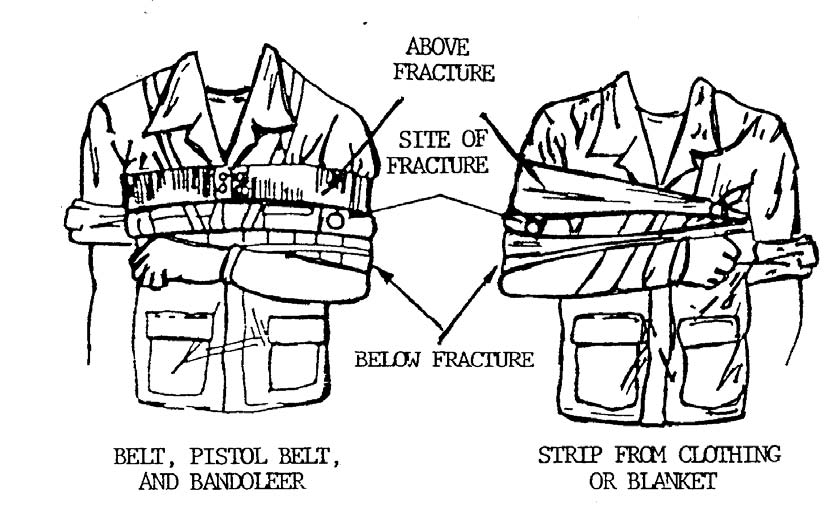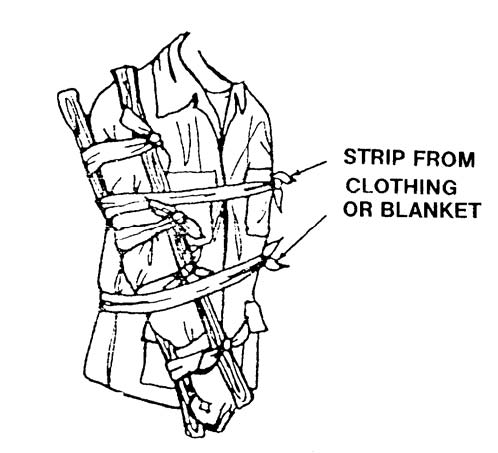Treating Fractures in the Field
Lesson 5: Fractures of the Upper Extremities
5-9
5-9. APPLY A SWATHE
A swathe is a large strip of cloth, muslin bandage, field dressing, blanket strip, pistol belt, trouser belt, bandoleer, or other material used to immobilize an arm. The swathe should be three to six inches wide.
a. The chest can be used as the rigid object to immobilize an arm (fractured or dislocated shoulder, fractured humerus, or fractured clavicle) by applying a sling to the forearm and swathes to the upper arm. If the humerus is fractured, one swathe is applied above the fracture and one swathe is applied below the fracture (see figure 5-11).
Figure 5-11. Sling and swathes used to immobilize a fractured humerus
(chest used as the rigid object).
b. Two swathes are applied when immobilizing a fractured elbow (not bent) once the arm has been splinted. One swathe is applied above the elbow and one swathe is applied below the elbow (see figure 5-12).
Figure 5-12. Swathes used to immobilize a fractured elbow (not bent).
c. A single swathe is normally used to immobilize a fractured forearm once a splint and a sling have been applied (see figure 5-13). The procedures below are for applying a swathe to such an injury, but the same general procedures can be used for applying swathes to other injuries. Applying the swathe over the sling helps to further limit movement of the forearm.
Figure 5-13. Swathe used to immobilize a fractured forearm.
CAUTION: Do not apply a swathe on top of the fracture site. The pressure of the
swathe could cause additional damage to the nerves and blood vessels
around the broken bone.
(1) Place one end of the swathe on the sling at the breast pocket near the uninjured arm. Hold this end at this location.
(2) Wrap the other end of the swathe across the sling, around the upper arm on the injured
side, behind the casualty's back, under the uninjured arm, and back to the breast pocket.
(a) You have now encircled the casualty's chest and injured arm. The uninjured arm, however, remains free to move.
(b) Since the fracture is in the forearm and not the upper arm, make the swathe wide (about 12 inches) when it goes across the injured arm. If the casualty had a fractured humerus, you would not make the swathe as wide since the swathe should not be applied on top of a fracture site.
(3) Tie the two ends of the swathe in a non-slip knot over the breast pocket on the uninjured side.
(4) Check the casualty's pulse below the swathe. If the casualty had a pulse before the swathe was applied but the pulse is no longer present, loosen and retie the swathe. If a pulse is still not present, evacuate the casualty as soon as possible.




